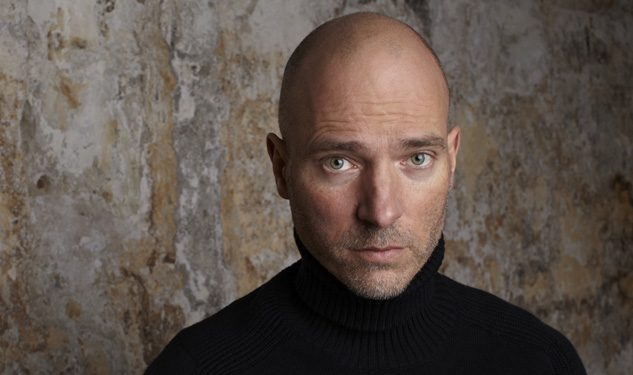
- Industry
Nordic Noir Shines in the United States
Nordic welfare countries are complex. They are often named as the happiest countries on Earth but there is a darker side to the coin; their people are one of the top ranked consumers of antidepressants. Swedish filmmaker Ingmar Bergman’s melancholy vision of human relationships has been known worldwide since the 1950s. Now stories like Män som hatar kvinnor (The Girl with the Dragon Tattoo), Hodejegerne (Headhunters), Borgen, Lilyhammer as well as Bron and its American adaptation The Bridge and Forbrydelsenand its American adaptation The Killing are telling those stories with a modern twist. Nordic Noir – usually bone-chilling thrillers – typically takes place in extreme environments. Sadness, darkness, social awkwardness, loneliness, harshness and barrenness have served as a deep well of inspiration to great Nordic crime literature for decades.
“Swedish writer Stieg Larsson’s Millennium series started a new wave of “Scandi-drama”. And it became this big thing,” says Danish actor Nikolaj Coster-Waldau who plays Jaime Lannister on Game of Thrones.
Larsson’s trilogy – The Girl with the Dragon Tattoo (2005), The Girl Who Played with Fire (2006), The Girl Who Kicked the Hornets’ Nest (2007) – were read all over the world. So were many other Nordic crime books before that. Kenneth Branagh, the Irish actor who has played Swedish inspector Wallander in the British version of the eponymous TV show started by reading Jar City by Icelandic novelist Arnaldur Indriðason.
“Then I discovered Swedish author Henning Mankell and his book series Wallander. I have also read Norwegian and Finnish crime fiction. I enjoy a poetic dimension and larger themes that spaciousness of the northern land seems to make possible. There’s something about the severity of the weather that is very gripping and isolating. The environment is often very scary but magnificent,” he said at an HFPA’s press conference in Los Angeles.
Characters in Nordic Noir are often morally ambiguous, goal-oriented individuals who prefer being by themselves. The stories are also known for having strong female characters.
“English language audiences might find it very unusual, but also exotic and attractive that we have a female prime minister who rides a bicycle. To some degree Nordic countries are very direct, honest, pure, liberated, modern and feminist societies,” says Thomas Vinterberg, the Danish director behind movies like The Hunt and Far from the Madding Crowd. The HFPA recently met him in a press conference in New York.
Realistic, lurid and blunt TV shows and movies have created their own genre, Nordic Noir – crime stories from Denmark, Finland, Iceland, Norway and Sweden. Finnish director Aku Louhimies took a deeper look into Nordic Crime when I met him in Helsinki, the capital of Finland. He has directed eight feature films, the latest dark drama 8-pallo (8-ball) and several TV shows.
“Nordic countries are twofold. Winters are long, there is a lot of depression and people drink a lot but at the same time we have a strong and safe middle class society, where education is free and kids can walk alone to school. We know how to enjoy quiet time. Silence is part of our culture and our way of communicating. We don’t need to fill all the silence with talk. We might be a bit introvert but we are honest about who we are. That reflects in the Nordic stories as well: The speed of the dialogue is not as fast as in the U.S.”
Swedish-American actor Joel Kinnaman, who played detective Stephen Holder on the American version of the Danish television series The Killing, recognized as well that the darkness effects Nordics. “Six months of the year we succumb to darkness. We have a very long winter and even in Stockholm, which is the southern part of Sweden, it gets light around 10am and it gets dark again around 2:30 or 3pm. Maybe the darkness lends itself well to the imagination of many Nordic writers to write pretty violent things, but there is no more violence in Nordic countries than anywhere else. Probably even less,” he said at the HFPA’s press conference in Los Angeles.
TV shows and movies are made differently in Nordic countries than in the United States. “They are often funded by the state, but there is also demand from the audience. Nordic countries are small territories, so TV shows and movies aren’t made only for a blockbuster purpose but to keep culture and traditions alive. The goal is to make them well and reach out to a large audience, but not directly to make money. We don’t have to worry about big ratings. That’s why our choices can be braver,” Finnish director Louhimies explains.
There is no pilot season. Companies are producing one season at a time and it won’t be cancelled in the middle of the season. “The Nordic way is to write the season at once, and then start the production. The writer gets to decide what remains in the script. And the script is treated like one long feature length screenplay. There is usually only one director for the season, kind of like a show runner.”
And there is more Nordic Noir on the way. Remakes of TV shows like The Legacy (Denmark), Mustat lesket (Finland) and Mammon (Norway) are currently in development as well as the thriller Blood on the Snow which is based on Norwegian author’s Jo Nesbø’s novel.
“I don’t know why, particularly at this time, over these last 10 years or so Nordic drama gripped us but it has and it continues to do so as long as the novels or the television adaptations or films are good,” Kenneth Branagh says.
Kirpi Uimonen Ballesteros
Joel Kinnaman and Kenneth Branagh 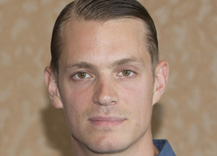
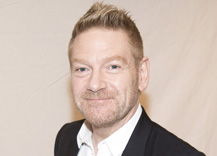
Nikolaj Coster-Waldau and Thomas Vinterberg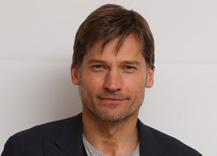
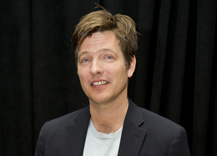
Photo credit: HFPA